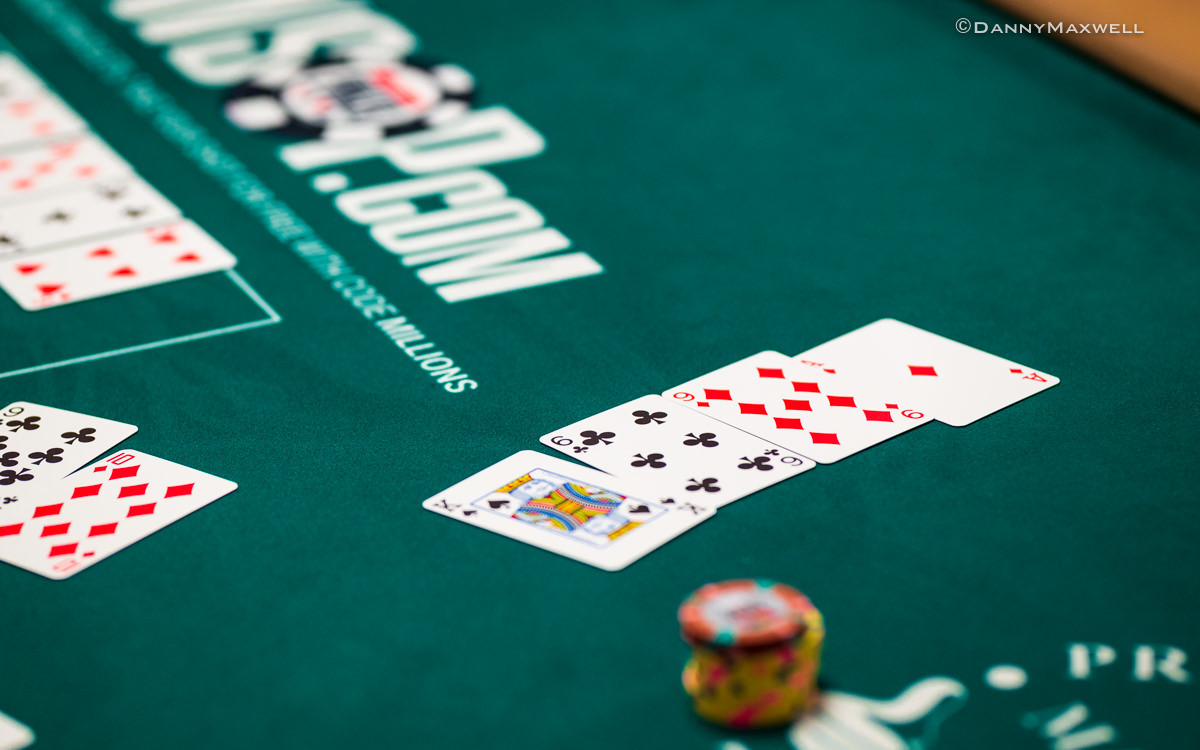Start A Pot In Poker
The very first thing the aspiring 6-max cash game player should do is learn what range to open-raise the pot with from each position. Learning charts, however, is an exercise in memorisation and this alone will not suffice to build a solid foundation. In this introductory lesson on 6-max cash games, we shall we defining not just what hands to raise pre-flop, but why to do so from each position on the table.

By ‘opening’ we mean raising as the first player to enter the pot other than the blinds. Dealing with one or more limpers will be discussed at a later point in this course.
Please find below the Start a pot as in poker answer and solution which is part of Daily Themed Crossword December 22 2020 Answers.If you are looking for other crossword clue solutions simply. Please find below the Starting pot for poker answer and solution which is part of Daily Themed Crossword March 27 2020 Answers.Many other players have had difficulties with Starting pot for poker. Start a poker pot is a crossword puzzle clue. Clue: Start a poker pot. Start a poker pot is a crossword puzzle clue that we have spotted over 20 times. There are related clues (shown below). The Crossword Solver found 20 answers to the start the pot, in poker crossword clue. The Crossword Solver finds answers to American-style crosswords, British-style crosswords, general knowledge.
The 6-Max Table
Let’s begin by getting more acquainted with each position on a 6-max table.
As you can see, the positions are separated into three types. First, we have the non-steal positions in blue where our opening range will be more restrained given the larger amount of players to act, and therefore, the higher the chance of running into a big hand, getting called, and getting 3-bet.
The red positions are ‘steal’ positions. This does not entail that we never have a strong hand when we open from these seats, but the profitability of many of the hands we open in these seats relies at least partially on sometimes making our opponents fold pre-flop. For example, opening 86s from the CO (Cut-Off), which I generally recommend, would not be a profitable play if we always got called or raised by at least one opponent.
The position in black is the BB (Big Blind). We shall not be discussing this seat today, for the simple reason that it is impossible to open the pot from the BB. If everyone folds to us, we take down the pot, which is nice, but does not generate much strategic interest. Later on in the course, we shall explore how to defend our big blind against opens from other players.
For now though, let us explore the reasons to open a pot. Only then we can start to understand how to build an opening range in a whole array of dynamic situations and that is a lot more interesting and profitable than just following a chart.
Reasons to Open the Pot
1. Value
Occasionally, we are fortunate enough to be dealt powerhouse hands such as AKo or QQ. These hands have very high equity, meaning that they win at showdown more than the vast majority of other hands, and therefore entitle us to a large average amount of the pot that we have built. The bigger the pot that we win, the more money we make. 70% of a large pot is a whole lot better than 70% of a small one.
We raise from all positions on the table with big hands for value, but the criteria for making a value raise becomes less strict as we move towards the BU (button). This is because our opponents will call us with wider ranges as our incentive to steal the pot grows. Therefore, while KJo would be a skeptical hand to build a big pot with from UTG, it makes a fine value-raise from the BU because the BB will be forced to call hands like K9o and K5s to protect himself from us stealing profitably with any two cards. There is no set group of starting hands that we should always open for value, instead, we should think of a value open as raising a hand that will continue to be in good shape after that raise gets called.
2. Thinning the Field
Our equity is the amount of the time that we win the pot at showdown. Equity is much like a cake. The more people we have to share it with, the smaller the slice we get.
One of our most common aims when we open raise is to force out some of our competitors so that we can have a larger slice of a larger cake. Take QQ from UTG, for example. This big pair has a massive 77% equity against a range that might call our open on the BU, which we could picture as something like: [55-JJ, ATs-AQs, KJs-KQs, QJs, JTs, T9s, 98s, 87s, AQo]. If we merely limped instead of raising, we would attract a smaller average pot with a larger average number of opponents. If we add another two opponents’ calling ranges to the equation, identical to the one above, then we are playing 4-handed and our 77% equity plummets to 49%. So what it really boils down to is: do you want 77%of a big pot or 49% of a small one? Thinning the field is essential in the pursuit of maximising earnings from big hands.
Winning more at showdown, however, is not the only benefit to thinning the field. Seeing a flop with fewer opponents will also help us get everyone else to fold before the river those times we do not flop so well and are relying on fold equity (winning the pot some amount of the time by making people fold). Imagine that we open JTs in the HJ (Hi-Jack), and in the process, manage to thin the field to just one opponent: the BB. On the flop of 742r, we make a small bet and the BB folds. Clearly, this fine result of winning by betting Jack-High would have happened a lot less often had we been in a four-way pot. By thinning the field pre-flop, we created a situation, in which even if we missed the board, we would have ways to win the pot a reasonable amount of the time.
3. Stealing Blinds
A more extreme form of thinning the field occurs when we thin it to such an extent that we are the only player remaining. At this point, we win the blinds, which are nothing special in the short-term, but allow us to keep our win-rate healthy in the long run. By winning very small pots very often, we keep ourselves from being eaten alive by the blinds and gain a drip of essential poker nutrients. In 6-max cash games, where the blinds come around far more frequently than in full-ring, and where we find ourselves in a steal position much more frequently, having a wide opening range is essential.

Mathematically, the EV of stealing with a hand like K6s on the BU (button) is very much in our favour. If we open for 2.5bb we are risking 2.5 to win 1.5. Even if we were to fold our cards on the flop every time we got called (a horrendous strategy), our steal would still only need to work 2.5 /(2.5 + 1.5) = 62.5% of the time to break even.
Most players will rightly play tight from the small blind where it is dangerous to call with too wide of a range with the worst position on the table and a player left to act behind. The small blind usually folds here 80% of the time or more. The big blind should defend a lot more often given that his pot odds are better and because is closing the action. He might only fold around 60% of the time here. This means our steal will work 0.6 x 0.8 = 48% of the time – not far from our target fold equity for breaking even under the ludicrous assumption that we were planning on folding every flop.
Now, because our actual flop strategy is far better than folding every flop and involves selectively continuation-betting, value betting good hands, and semi-bluffing draws, we will need far less than 62.5% fold equity, and less than 48%. Stealing with a hand as playable as K6s will be very profitable on an average table.
Conclusion (Default Opening Ranges)
The following ranges are to be used as a rough guide only. Different tables will call for different opening ranges from each seat, but here is a solid default approach for an average table, which is neither especially loose nor especially tight. Perhaps at such a table, on average, there would be three solid regulars, one tighter player and one looser recreational player.
Please feel free to deviate from these ranges by stealing wider from the SB vs. an opponent who under-defends their blinds, raising more hands for value from UTG where the BB is too loose, and in many more spots that call for some kind of exploitative strategy.
Under the Gun Position
High-Jack Position
Cut-Off Position
Button Position
Small-Blind Position
Join us on our Discord channel.
Test your knowledge with our short quiz below
This time we are looking on the crossword puzzle clue for: Start a pot in poker.
it’s A 20 letters crossword definition.
Next time when searching the web for a clue, try using the search term “Start a pot in poker crossword” or “Start a pot in poker crossword clue” when searching for help with your puzzles. Below you will find the possible answers for Start a pot in poker.
We hope you found what you needed!
If you are still unsure with some definitions, don’t hesitate to search them here with our crossword puzzle solver.
Possible Answers: Ante.
Last seen on: Daily Celebrity Crossword – 6/24/19 Movie Monday
Random information on the term “Ante”:
The following is a glossary of terms used in card games. Besides the terms listed here, there are thousands of common and uncommon slang terms. This list does not encompass terms that are specific to one game.
A few games or families of games have enough of their own specific terminology to warrant their own glossaries:
Terms in this glossary (unlike those above) should apply to a wide range of card games.
Ace
Acorns
age
alliance
ante
auction
Bells
bettel or bettler

bid
blank
bleeding
bluff
build
bonus
call
card points
carte blanche
chicane
Clubs
compendium game
contract
counter
court card
cut
deal
dealer
deck
Poker Pot Starter
declarer
defenders
What Is A Poker Pot Starter Called
deuce
Diamonds
discard
discard pile
doubleton
downcard
draw a card